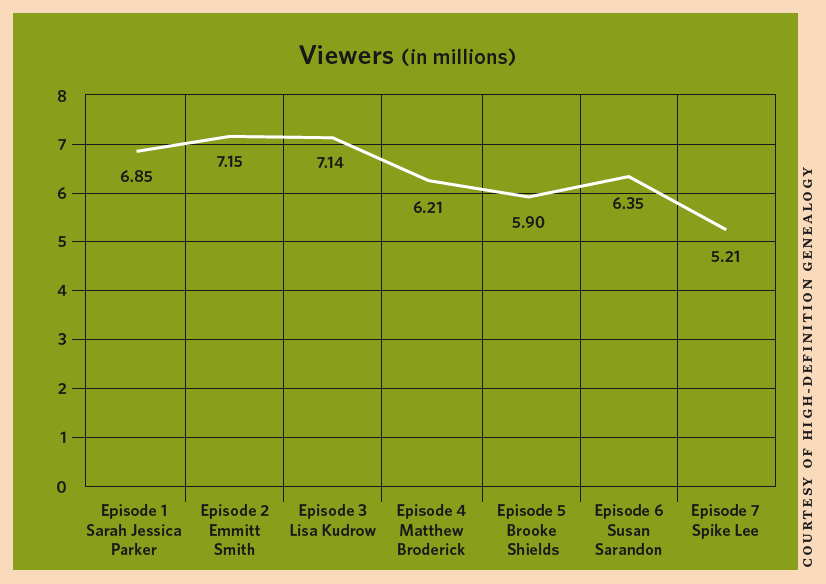Sign up for the Family Tree Newsletter Plus, you’ll receive our 10 Essential Genealogy Research Forms PDF as a special thank you!
Get Your Free Genealogy Forms
"*" indicates required fields
- I think it’s a fantastic show. What it does best is capture the excitement of finding your place in history and thus making history come alive. Where it fails, in my opinion, is in making genealogy research look too easy. —AlanRRT
- If I were new to genealogy, I’d be discouraged, thinking I’d have to be wealthy to jet across continents or countries to obtain information. They ought to have a behind-the-scenes episode that shows the work necessary to bring those tidbits of information to the screen. —nporter
- Yes, there will be people intrigued by the show who may not get past asking their parents about their ancestors or a couple hours of research. The takeaway is that person will know a bit more about their ancestors than they did before … That is good. —lhmatt
- I would like to see some “average” families trace their roots. —dreyjazzbear3
- What about the show [“Find My Family” on ABC]? That was regular people and much more touching, but it was cancelled right away. I think this new show may make some people more interested in genealogy. —tajicat
- [Since the show began] I’ve had a big jump in the number of e-mails I receive from people asking about folks in my tree. —rtanyon
- I was sadly disappointed that genealogy research techniques and methodology were basically ignored. —Buckeyeroots
- The history has been wonderful, and I can only hope it inspires some young people to know more about our country. —kvsmm194
• Preliminary research was done on more than 20 celebrities; scheduling issues whittled the final number to seven.
• Filming the episodes took 9.5 months.
• The core research team consisted of 30 genealogists; scads of others visited archives, did record lookups and more.
• Researchers spent an average 425 hours on each show.
• Research locales that didn’t appear on screen include many US states, Germany, England, Ukraine, Russia, Ireland, Korea and Canada.
• Repositories celebs and genealogists visited for the show include the Massachusetts Historical Society <www.masshist.org>, New England Historic Genealogical Society <www.newenglandancestors.org>, state archives, courthouses, public libraries, churches and synagogues.
“Who Do You Think You Are?” ratings were good enough to earn a second season: The Brooke Shields and Susan Sarandon episodes (which, notably, aired after March Madness) ranked first in their time slot, four episodes ranked second, and the Matthew Broderick episode came in third.

ADVERTISEMENT




